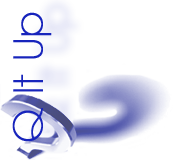 Q It Up: Do you use or have you ever used an external controller for your DAW, maybe something like the Mackie Universal Controller Pro? If so, what controllers have you used, and with what DAWs? What is/was your experience with them? What would you say are the pros and cons of using an external controller? Please add any other comments you may have.
Q It Up: Do you use or have you ever used an external controller for your DAW, maybe something like the Mackie Universal Controller Pro? If so, what controllers have you used, and with what DAWs? What is/was your experience with them? What would you say are the pros and cons of using an external controller? Please add any other comments you may have.
Dave Cockram, Production Manager, Indie88, Toronto, ON: The only time in radio I found an external controller really useful was when I bounced intros/music into our automation system. It was easy to ride the fader to adjust levels of the music bed after a jock intro or something like that.
Typically I’m all mouse, not really by choice. I just find I can automate volume with a mouse quicker than writing automation in real time.
I do find more uses for a media controller when producing music; when you want to gradually roll EQs.
Joel DiFazio, SiriusXM, New York, NY: I have not had an opportunity to use a controller device since having to give up my Orban Audicy. That said… I really miss my Orban Audicy!
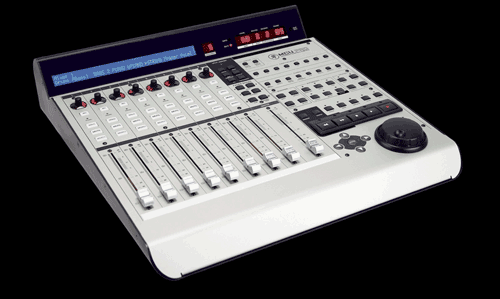 Dave Savage, Vice President | Creative Services Group, iHeartMedia, Atlanta, GA: Back when I was on Cool Edit Pro I used Red Rover. It was worthless except for if I had to do an audio transcription because I could start, stop and rewind without minimizing my document.
Dave Savage, Vice President | Creative Services Group, iHeartMedia, Atlanta, GA: Back when I was on Cool Edit Pro I used Red Rover. It was worthless except for if I had to do an audio transcription because I could start, stop and rewind without minimizing my document.
In '99 I got on the Orban DSE workstation, which essentially was one huge controller.
A year or two later, it was Cool Edit v1, but controllers were only being made for the higher-end DAWs. One company made a generic controller, I don't remember the name, other than the box itself was red.
After a while, the mechanic-mindset changes, and you just do everything on screen. I can see where a full recording studio would need a controller, but for simple audio post like we do, it's something else on the desk to get in the way.
I'm surprised when I run into people that don't use keyboard shortcuts, and instead mouse and click for everything. To me, unless I'm doing specific waveform manipulation, the mouse slows me down.
Perhaps the PT people use them, I don't know.
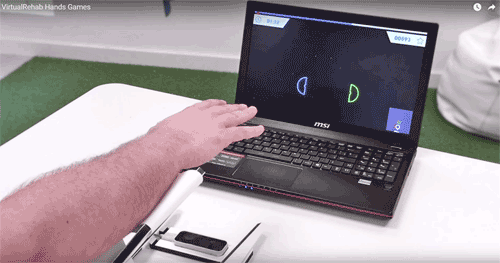
Ben Thorgeirson, Ben Thorgeirson Voice Over: Nah. Just a good old mouse and keyboard for me. If I'm starting fresh with a new DAW, I'll take a few moments to set up my shortcuts.
Don Elliot, Levine/Schwab Broadcasting, Los Angeles, CA: Maybeeee.... Still have a RedRover box. I also use this [See Figure 1] with no mouse or controller… Think "Minority Report"… with your hands in the air doing all the motions.
Steve Wein, Creative Services Director, KTRS-AM, St. Louis, MO: Here at KTRS St. Louis, I'm using the Avid Artist Control in conjunction with ProTools 11.3.0 on a PC. I'm not as big a fan of it as I was when I had the Digi 002 external controller from Digi Design back when we had ProTools 7.1.1 here. But either of them is much better than having to use a mouse or track ball to set levels, move pan pots, etc.
The reason I like the Digi 002 better is because the faders, pan pots, and so forth resemble what is on a typical board where the pan pots, faders, and so forth are dedicated to individual tracks, and you don't have to press multiple use soft keys to bring up the function you want. That saves time when the conveyor belt of production orders just keeps bringing more and more work, and there's not a lot of time to spend on each one.
I use the Digi 002 with ProTools 7.1 on my iMac in my home studio, and I really don't feel the need to upgrade to a newer version, since that version has all I need in terms of "bells and whistles". From what I understand, I'd need to upgrade from my Digi 002 to a newer controller because it is not compatible with ProTools 11.
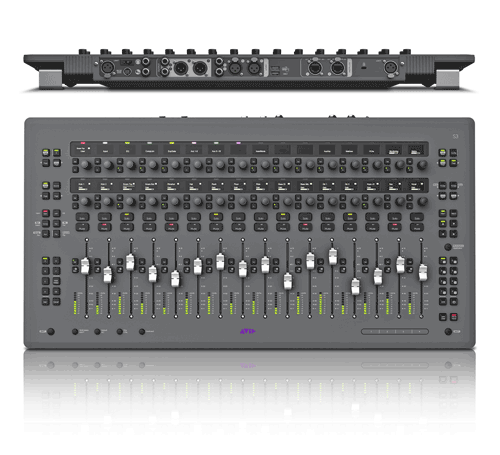
Gord L Williams: Re: Do you use an external controller with your DAW? The short answer is no, I do not use an external controller at present.
I think I may be interested in the Mackie one at some point, but I have found that for most it requires a fair bit of midi programming. I did have a Behringer for a very short period and tried to roll up my sleeves to get it going, but for my use it just wasn't practical. I can see it’s nice to have, but the learning/programming curve is prohibitive if you are doing voiceovers and a bit of remixing. I can train Mixxx to handle my external controller for clubbing type mixes quite easily. I just look for it and it’s there.
I think the same thing is available for the Mackie when it comes to the studio work I do with Mixbus, but it’s not a road that I feel is practical to travel for the reasons I have outlined.
If Radio and Production puts one up for grabs I will take a ticket!
Wally Wawro, WFAA-TV Creative Services, Dallas, TX: I've got to have a fader! I recently upgraded from Pro Tools Pro Control to the new Pro Tools S3 surface and the companion Avid Transport. So far no complaints.
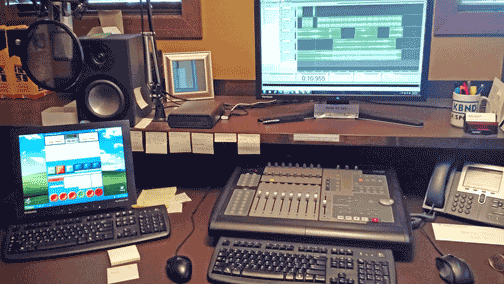
Jay Rose CAS, www.jayrose.com: As far as I know:
- It may be possible to mix multi-track music with a mouse, since you can set the faders for an overall balance, and let the players’ own dynamics control who’s being heard at any moment. I don’t mix much original music, and could be wrong about this.
- A good media mix requires at least two constantly moving faders: one controlling individual words in the announcer; one letting the music bounce and duck depending on those words and the project's natural timings. These two main channels are interactive, and one might be going up while the other goes down and as you’re listening to both. Many mixes also require multiple music sources cross-fading, sound effects, and possibly other voices… a lot of moving faders, and any combination of them might be moving at any time.
On top of which, motorized faders are a great UI. They show you how automation or levels have already been set, and let you modify the settings instantly. And you can use muscle memory, since channel controls are always where you expect to find them. You don’t have to waste time with mouse/cursor/screen hunting to grab a virtual control, and can keep your eyes on the script or waveform displays.
To put it another way: if you’re writing a script, would you rather use a standard computer keyboard or search for on-screen letters with a mouse?
I’ve used controllers ranging from the surprisingly capable Behringer BCF to elaborate studio consoles, driving a lot of different software, and of course the original Orban DSE and Audicy control surfaces. All of them were better than trying to use a mouse. My current rig is 24 channels of Mackie with Nuendo, plus some additional knobs on a Steinberg CMC, all nicely fitting into a home studio.
Michael Pedersen, Station Manager, 106.7 RED FM (CKYR): All of our production rooms have an M Audio Oxygen 49 MIDI controller so that our producers can write jingles! We believe that broadcast production and a deep love of music go hand in hand. When we interview new candidates, it is important to us that they are into DAW song writing/production, so a controller like this in the work place just makes sense! Our producers are also encouraged to bring anything else in that they use to write music; one uses Native Instruments Machine to write bed tracks on a regular basis.
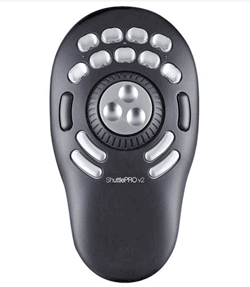 Dave Stalker, Production Director, Combined Communications, Bend, OR: (Out here in the wilds of Oregon's High Desert, once I climb off my pedal generator after getting the batteries fully charged,) I do have an external controller. The Mackie emulation drives a Tascam FW-1884 [See Figure 2], which is paired with Adobe Audition 3.0.1
Dave Stalker, Production Director, Combined Communications, Bend, OR: (Out here in the wilds of Oregon's High Desert, once I climb off my pedal generator after getting the batteries fully charged,) I do have an external controller. The Mackie emulation drives a Tascam FW-1884 [See Figure 2], which is paired with Adobe Audition 3.0.1
Every day is adventure with this setup. On good days the PC with Audition on it recognizes the FW-1884 which acts as the sound card for the computer. When it works, it's fantastic!
The physical slider pots on the Tascam track with software adjustments, like volume changes, and vice-versa... when you make changes on the sliders, it follows along in the onscreen software. Clients think it's real cool... the controls move by themselves.
The downside of this whiz-bangery is that it’s dependent on FireWire. Frequently, like this morning, after automatic software updates, the computer has a very hard time locating the FW-1884 and without it, nothing happens. Audition refuses to play or record. This results in repeated complete re-boots of the Tascam and the computer. Once they find each other it's like music to your ears, literally.
My engineer tells me that FireWire is going the way of landline telephones in our homes, and I'm resigned to having to settle for some new whiz-bang setup very soon. But I have to say, I'll miss my hands-on slider pots, even if the FW-1884 has frequent brain farts.
Jack Phillips, Production Manager, Alpha Media, Louisville, KY: I use a Shuttlepro V2 with Adobe Audition. It took me a few weeks to get used to it, but now I can’t imagine editing without it. Before, I always had one hand on the mouse and one flying all over the keyboard using shortcuts. Now I have one hand on the mouse and other on the Shuttlepro V2. This allows me to edit much faster. It’s very easy to configure and can be used on any program, even web browsers. My only complaint is that there aren’t enough buttons for all the shortcuts I use.

